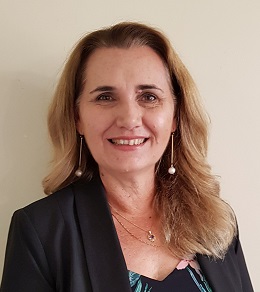What makes me, me? And can my identity be impacted by – or be influencing – my anxiety?
These are a couple of great questions to explore!
In a world of constant change and busy-ness, people can be faced with an array of mixed messages of who they should be or need to be, to be accepted within society. Our value, self-image and self-worth become linked to how we compare to others based on our own experiences, and the construction of our belief systems.
As we resolve conflicts at different stages of our lifespan development, we begin to form our personality and psychosocial identity in response to this (McLeod, 2018).
Our early attachments to people such as parents, family and friends, along with our cultural and social awareness, all help to build and influence our identity. Schemas or patterns of thoughts and behaviour are formed and become our normal response to processing situations.
When challenges present that are at odds with these beliefs and resolution becomes difficult, inner conflict can bubble over into our external world and impact on our relationships, work and social environments. A state of anxiousness can arise if stress or worry are not resolved.
What is Anxiety?
Anxiety is the body’s way of highlighting that there is an internal unease which activates the brain’s warning system. Situations that may place us in danger or are perceived as a threat will fire up our “fight or flight” response which reacts with the body as a whole. Anxiety can be scary and promote a sense of fear and uncertainty that can impact on everyday life (Black Dog Institute, 2018).
According to Beyond Blue (2018), approximately 2 million Australians each year will be affected by anxiety. There are many factors that can lead to anxiety presenting in a person’s life, such as family history; personality traits; behaviours; ongoing stressful situations; and chronic illness; to name a few.
The good news is that there are medical and therapeutic interventions that can assist people to identify triggers, learn strategies and manage their anxiety so that they are able to restore healthy functioning. Many of my clients have held the belief that anxiety is a part of their identity and often present with a sense of being controlled by their anxiety.
Helpful Interventions
- Bio-psycho-social-spiritual model
As an integrative therapist, I work with clients using a bio-psycho-social-spiritual model that explores all aspects of the entire person. Each facet interweaves to create a holistic understanding and brings awareness for the client to experience themselves as unique individuals. Reconnecting the sections of self promotes a movement towards healing and growth.
- Cognitive Behaviour Therapy
Commonly known as CBT, Cognitive Behaviour Therapy is helpful to find understanding in both identity and anxiety.
Awareness of our thoughts, feelings and behaviours can promote a desire for change. Unpacking presenting symptoms and exploring our internal and external worlds can highlight where our thought structures may be influencing our responses and coping mechanisms.
Looking for patterns within our family of origin assists the individual to recognise whether identity has been formed through ongoing behaviours or thoughts that have been passed down through generations, or if they been influenced by sociocultural contexts.
CBT utilises varying techniques such as questioning, identifying and challenging individuals to sift through and find what it is they actually believe and is this in alignment with their true self?
- Expressive Therapies
“Activities such as drawing, drumming, creative movement, and play permit individuals of all ages to express their thoughts and feelings in a manner that is different than strictly verbal means and have unique properties as interventions” – Malchiodi, C. (2005).
Inviting clients to explore and express themselves through creative means can be a powerful therapeutic tool.
I often encourage clients to externalise and put colour, movement or imagery to their experiencing. Designing masks can be helpful to engage clients to explore the persona that they show their outer social world, and how this is connecting to their internal world. Self-expression through creative modalities offers clients an environment to gain deeper awareness and knowledge of their identity, and assists in resolving emotional conflicts that may be outworking through anxiety.
Seeing a counsellor can be a great help in finding understanding of our identity and humanness as we journey through out the different stages of life, particularly if anxiety is presenting because of a perceived threat or ongoing concerns that are unresolved. By exploring the aspects of self through a biological, psychological, social and spiritual lens, both client and therapist can identify beliefs, thoughts and behaviours that require change, adopt positive coping strategies, and achieve healthy resolution.
 Author: Wendy Smith, B Counselling, PACFA.
Author: Wendy Smith, B Counselling, PACFA.
Wendy Smith is a professional counsellor working with adults and adolescents. As an Integrative Therapist, she uses different modalities ranging from evidence-based practices such as ACT and CBT, drawing from others when appropriate. Wendy has a deep passion to see people find restoration and growth on their journey to wholeness and wellbeing.
To make an appointment with Brisbane counsellor Wendy Smith, try Online Booking – Wishart. Alternatively, you can call Vision Psychology (Wishart) on (07) 3088 5422.
References:
- Beyond Blue. (2018). Anxiety. Retrieved from https://www.beyondblue.org.au/the-facts/anxiety
- Black Dog Institute. (2018). What is anxiety? Retrieved from https://www.blackdoginstitute.org.au/clinical-resources/anxiety/what-is-anxiety
- Malchiodi, C. (2005). Expressive Therapies: History, theory and practice. Retrieved from https://www.psychologytoday.com/files/attachments/231/malchiodi3.pdf
- McLeod, S. (2018). Erik Erikson’s stages of psychosocial development. Retrieved from https://www.simplypsychology.org/Erik-Erikson.html